Lone Tree Hill is a place that evokes a spiritual reverence for the natural world. It awakens you to the knowledge that we were created to be the Earth's primary steward and friend; that this immense view of beauty is our responsibility alone to preserve.
Where on the Farm? Lone Tree Hill
If you go searching for the namesake tree at the top of Shelburne Farms’ tallest hill, you sadly won’t find it. And–spoiler alert–we don’t know what species it was or where the tree stood. But we know roughly when it existed, and we know a lot more about this favorite walking destination on our campus.
The hill, of course, has existed far longer than any tree growing on it. It was shaped and scoured by massive glaciers, then submerged under water. When Lake Vermont inundated the region some 20,000 years ago, sealed in by glaciers retreating north, local Mt. Philo was tall enough to be a small island, but not Lone Tree Hill.
Then, 12,000 years ago, Lake Vermont’s glacial ice dam failed. Even as ocean water from the St. Lawrence flowed in to help form the Champlain Sea, the water level overall fell nearly 300 feet. Lone Tree Hill emerged for the first time.
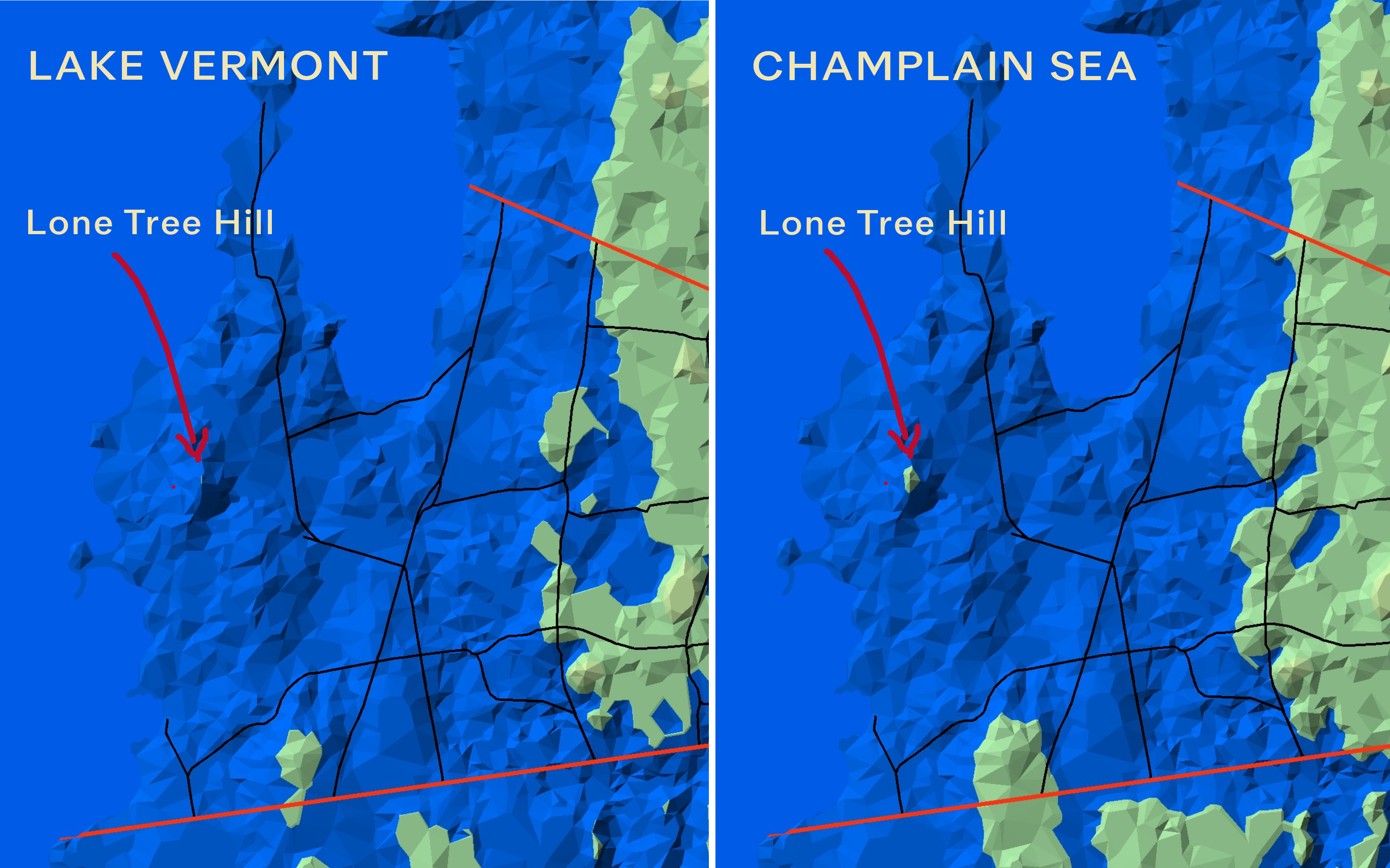
Slowly, unburdened of ice, all the land rose and pushed out the salty sea, leaving today’s Lake Champlain. The land began to nourish life: lichen, birches, deer. It became the home and hunting grounds of PaleoIndians, then, much later, of their descendants, the Western Abenaki. The Abenaki undoubtedly hunted and foraged on hills like Lone Tree, and the entire Champlain Valley was, and is, central to their identity. If they had a name for Lone Tree Hill, however, it has been lost to time–erased.
“Our” tree likely enters the story sometime later. The name “Lone Tree Hill” seems to first show up on the 1869 Beers Atlas of Chittenden County, noted as “Comstocks or Lone Tree Hill.” It suggests that a tree was standing on the hill for some time before 1869, perhaps one of the long-lived red oaks or white pines that thrived in the valley.
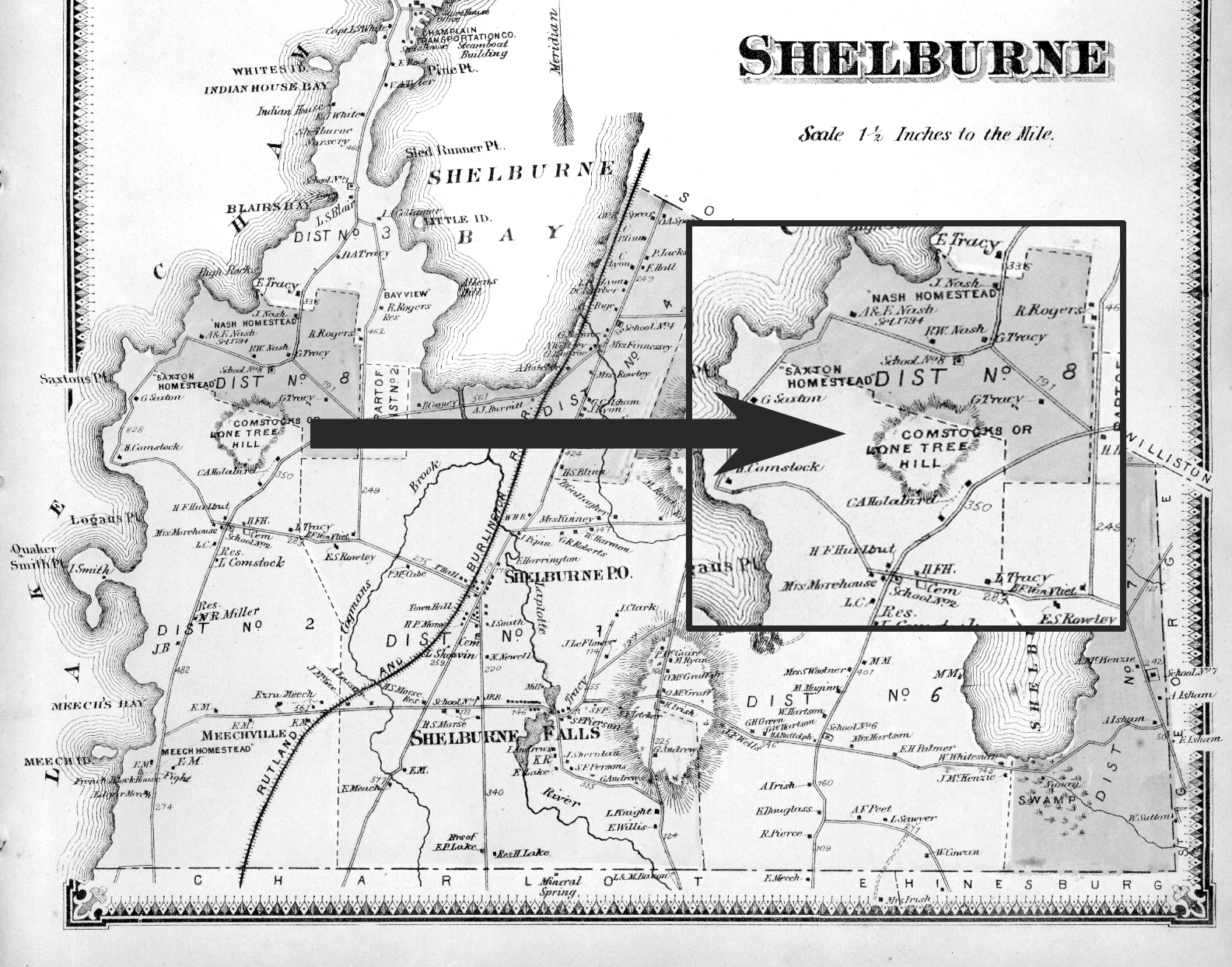
The Comstocks were among several early European settlers of Shelburne, arriving shortly after the Revolutionary War, serving the town in various capacities, and establishing farms that they later sold to the Webbs. Colonizers like the Comstocks had displaced the Abenaki and cleared most of the Champlain Valley of forests by the mid-19th century. The Lone Tree either escaped the saw, or grew after an early cut.
Whatever the tree’s origin, we know it didn’t survive long into the 20th century. In 1908, Lila Webb recorded its loss in one of her scrapbooks:
“Mr. A. Taylor died in Aug. 1908 - and in the same month the ‘Lone Tree’ on ‘Lone Tree Hill’ blew down.”
The tree was lost, but the name has endured. So has the place. Since at least the 1880s, its rounded crown has been mowed to hold back successional trees. Interestingly, though, as thousands of trees were planted around the estate in its early days, a brief article in the St. Johnsbury Caledonian in 1898 notes that, “What is known as Lone Tree Hill has been nearly covered.”
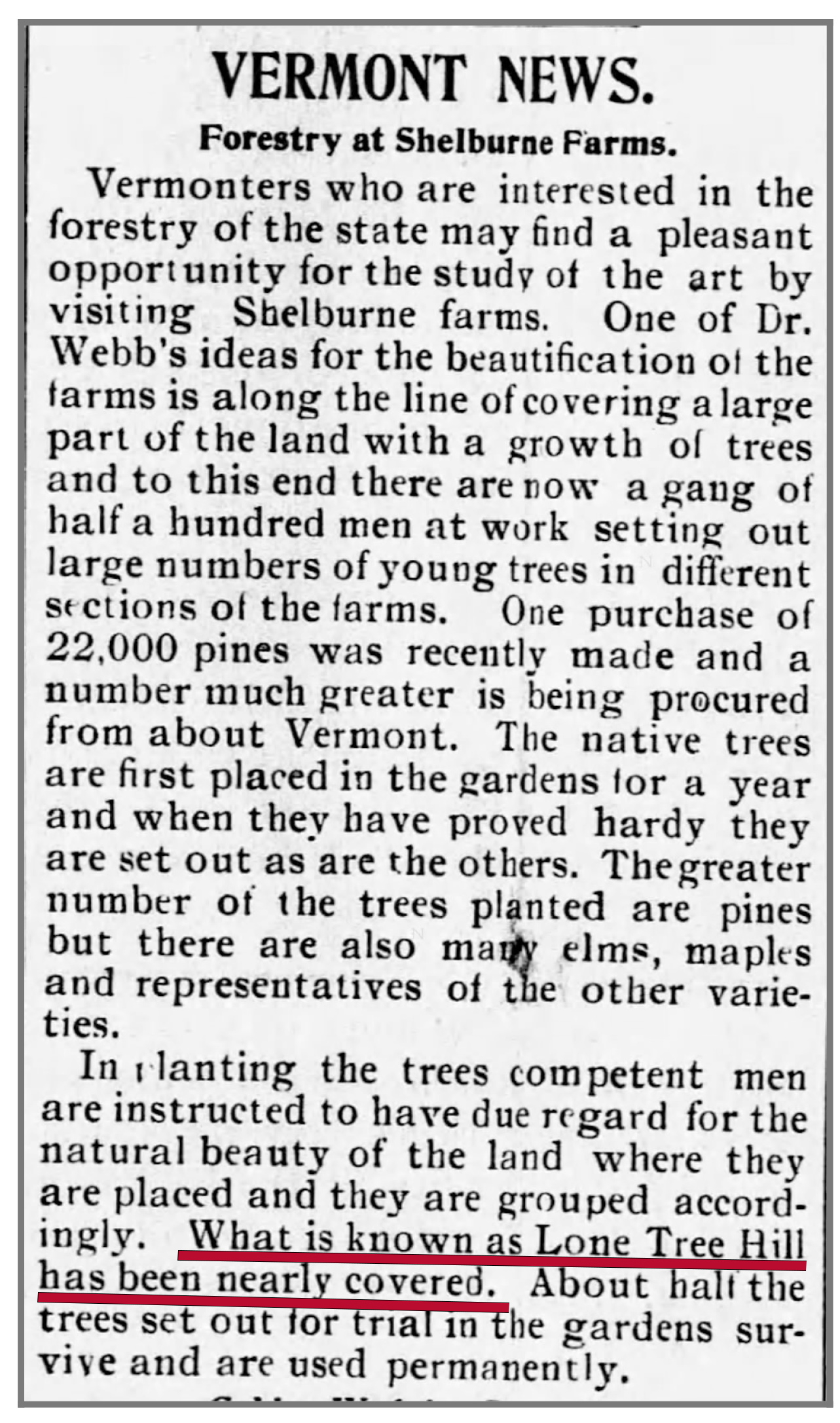
Nearly, but not quite. The Webbs built carriage roads traversing it to enjoy its unobstructed views both east and west. (Aerial photos from 1927 show the hill still bald.) Years later, the nonprofit wove walking trails to the top for students and visitors to enjoy those same views. We continue to mow the area annually, creating a meadow of orchard grass, brome grass, goldenrod, vetch, and more. People instrumental to the nonprofit are honored here. Lone Tree Hill has been, and continues to be, a place of reflection, gathering, and learning.
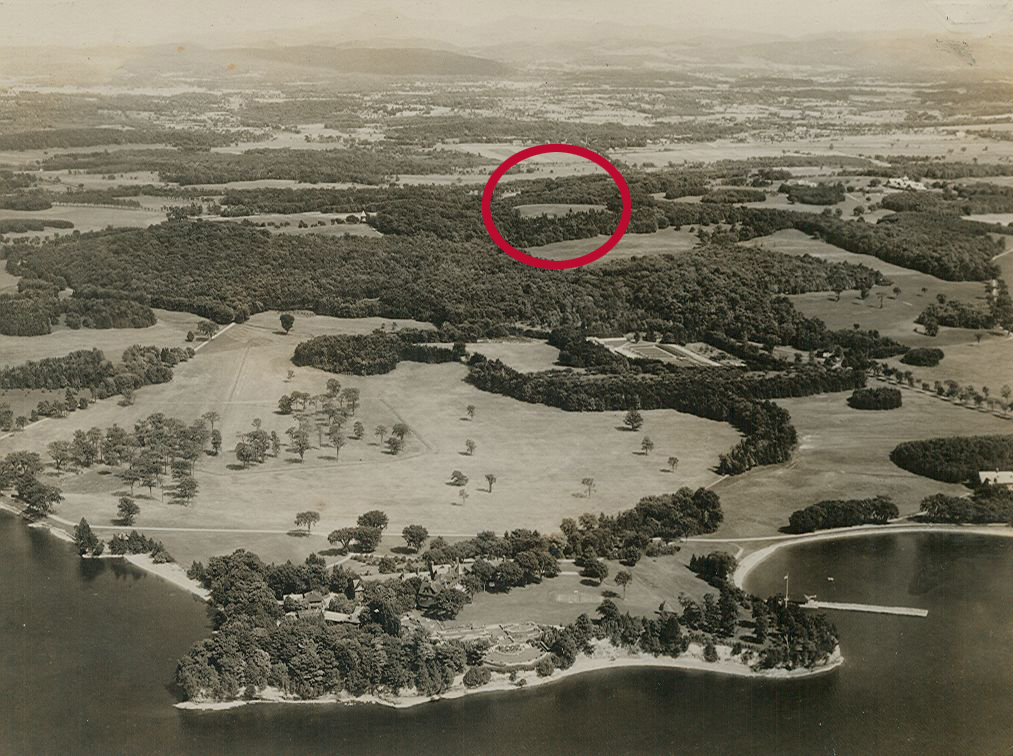
It was also, briefly, a place of battle. During World War II, farm employees and Shelburne residents volunteered to watch for enemy airplanes from a lookout station on top of the hill. A small wooden shack was equipped with a telephone and a pair of binoculars, and papered with silhouettes of Japanese and German war planes. (No planes were ever detected.)
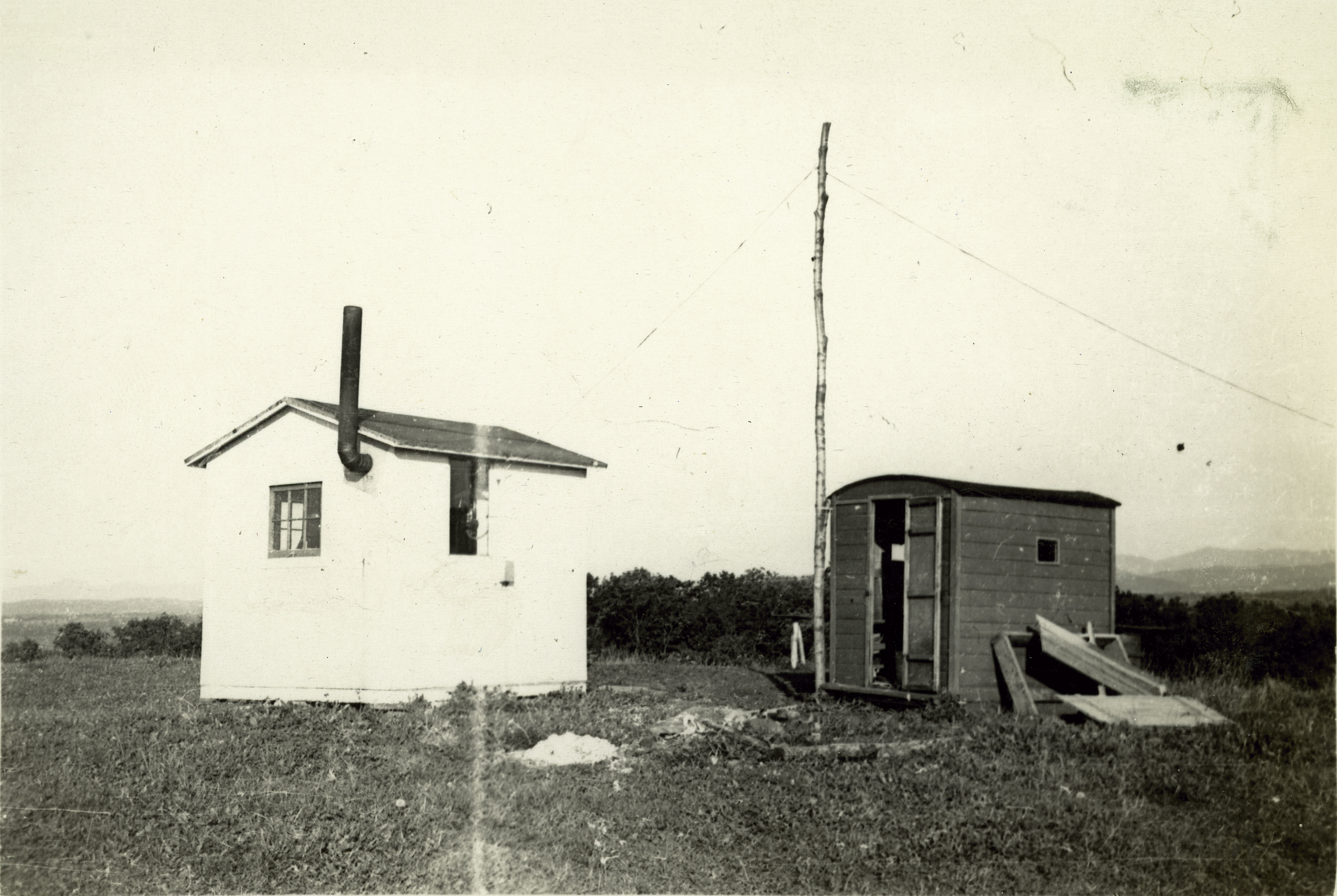
From the Abenaki, to the settlers, to the Webbs, and all the visitors and learners who now enjoy Shelburne Farms, Lone Tree Hill has witnessed and shaped a thousand memories, a thousand stories. In an April 1922 letter to her husband, Lila Webb wrote,
“I walked up to Lone Tree Hill this afternoon, & spent over an hour there... My, but it was beautiful this afternoon. I wish you could have seen it, with the snow on [Mount] Mansfield, & yet the sun so warm & bright, & no wind.” Lone Tree Hill, she went on, “seems to me like heaven.”
Few would disagree.
Do you have a memory of Lone Tree Hill? Share it in the comments.
Sources:
Walter Poleman, University of Vermont, Presentation on Shelburne Pond, 2022
Map of Shelburne, Vermont in Frederick Beers, Atlas of Chittenden County, Vermont (New York, 1869). Special Collections Library, University of Vermont
The St. Johnsbury Caledonian (St. Johnsbury, Vermont), Wednesday, May 4, 1898. From Newspapers.com, courtesy of the Vermont Historical Society
Letter from Lila Osgood Webb (LOW) to William Seward Webb, April 16, 1922, Folder 20, Deed Box Collection, LOW Papers, SFC, Shelburne Farms Archives
Oral History Interview with Samuel B. Webb Jr., Wednesday, October 18, 2004, Shelburne Farms Archives
Oral History Interview with Keenis Patterson, April 2007, Shelburne Farms Archives.






